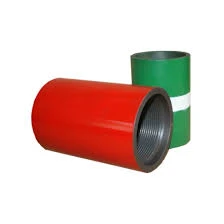- Afrikaans
- Albanian
- Amharic
- Arabic
- Armenian
- Azerbaijani
- Basque
- Belarusian
- Bengali
- Bosnian
- Bulgarian
- Catalan
- Cebuano
- Corsican
- Croatian
- Czech
- Danish
- Dutch
- English
- Esperanto
- Estonian
- Finnish
- French
- Frisian
- Galician
- Georgian
- German
- Greek
- Gujarati
- Haitian Creole
- hausa
- hawaiian
- Hebrew
- Hindi
- Miao
- Hungarian
- Icelandic
- igbo
- Indonesian
- irish
- Italian
- Japanese
- Javanese
- Kannada
- kazakh
- Khmer
- Rwandese
- Korean
- Kurdish
- Kyrgyz
- Lao
- Latin
- Latvian
- Lithuanian
- Luxembourgish
- Macedonian
- Malgashi
- Malay
- Malayalam
- Maltese
- Maori
- Marathi
- Mongolian
- Myanmar
- Nepali
- Norwegian
- Norwegian
- Occitan
- Pashto
- Persian
- Polish
- Portuguese
- Punjabi
- Romanian
- Russian
- Samoan
- Scottish Gaelic
- Serbian
- Sesotho
- Shona
- Sindhi
- Sinhala
- Slovak
- Slovenian
- Somali
- Spanish
- Sundanese
- Swahili
- Swedish
- Tagalog
- Tajik
- Tamil
- Tatar
- Telugu
- Thai
- Turkish
- Turkmen
- Ukrainian
- Urdu
- Uighur
- Uzbek
- Vietnamese
- Welsh
- Bantu
- Yiddish
- Yoruba
- Zulu
Understanding Casing Couplings for Enhanced Performance in Oil and Gas Drilling Operations
Understanding Casing and Coupling in Oil and Gas Drilling
In the oil and gas industry, casing and coupling play crucial roles in ensuring the integrity and safety of wells. These components are integral parts of the drilling process, serving to protect the wellbore from collapse, prevent contamination of groundwater, and provide structural support for the casing system installed in the drilled well.
What is Casing?
Casing is a series of steel pipes that are inserted into the wellbore after drilling. The primary purpose of casing is to stabilize the well, preventing it from collapsing under the pressure exerted by surrounding rock formations. Additionally, casing helps in isolating the various layers of rock and fluid that are encountered during drilling. This isolation is vital for preventing unwanted fluid migration between different geological formations, thereby protecting the freshwater aquifers located above oil and gas reservoirs.
Casing comes in various types, such as surface casing, intermediate casing, and production casing, each serving distinct functions at different stages of the drilling process. Surface casing is typically the first layer installed. It extends from the surface down to a certain depth, providing a protective seal against contamination from surface activities. Intermediate casing is used to traverse through unstable formations, while production casing runs all the way to the productive zone, allowing for the extraction of hydrocarbons.
What are Couplings?
Couplings are the components that connect sections of casing together. They are critical for maintaining the structural integrity of the casing system. Generally manufactured from high-strength steel, couplings are designed to withstand extreme pressure and temperature conditions present in deep wells. Properly connecting casing pipes using couplings ensures that the entire casing string remains intact and reduces the risk of leaks that could compromise well integrity.
casing coupling

There are various types of couplings, including threaded, welded, and special purpose couplings. Threaded couplings are the most common and involve male and female threads that securely latch onto each other. This method ensures a tight seal and ease of disconnection when repairs or modifications are necessary. Welded couplings, on the other hand, provide a more permanent solution, creating a solid connection without the risk of loosening over time.
Importance of Quality and Standards
In the context of casing and coupling, quality control and adherence to industry standards are paramount. The American Petroleum Institute (API) sets rigorous testing and manufacturing standards, ensuring that all casing and coupling materials can withstand harsh environmental conditions. The use of substandard materials can lead to catastrophic failures, including blowouts or leaks that result not only in financial losses but also environmental disasters.
Moreover, regular inspections and maintenance of casings and couplings are essential throughout the lifecycle of a well. Technologies such as downhole inspection tools are used to monitor the condition of the casing and identify any potential issues before they become severe.
Conclusion
In summary, casing and coupling are fundamental elements in the drilling process that help ensure the safety and efficiency of oil and gas extraction. A robust casing system, reinforced by high-quality couplings, is essential for preventing wellbore collapse, protecting groundwater, and ensuring the overall integrity of drilling operations. The importance of adhering to industry standards and undertaking regular maintenance cannot be overstated, as they are imperative for the sustainable operation of oil and gas wells. As the industry continues to evolve, advancements in materials and technology will undoubtedly enhance the functionality and safety of casing and coupling systems.
-
Tubing Pup Joints: Essential Components for Oil and Gas OperationsNewsJul.10,2025
-
Pup Joints: Essential Components for Reliable Drilling OperationsNewsJul.10,2025
-
Pipe Couplings: Connecting Your World EfficientlyNewsJul.10,2025
-
Mastering Oilfield Operations with Quality Tubing and CasingNewsJul.10,2025
-
High-Quality Casing Couplings for Every NeedNewsJul.10,2025
-
Boost Your Drilling Efficiency with Premium Crossover Tools & Seating NipplesNewsJul.10,2025







